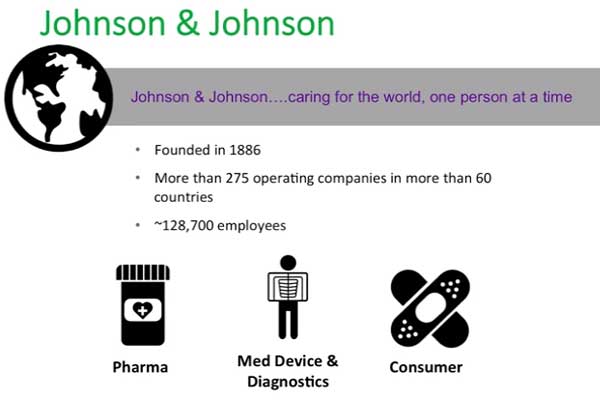Getting Started
As soon as a company enters the business planning stage of the biodesign innovation process, the time is right to start thinking about integrating its functional strategies and its operating plan into a holistic view of the business, what it is trying to achieve, and how the team will execute against its plans. The steps below can be used to guide the creation of an effective pitch that meets these important objectives.
Define the Purpose and Audience for the Pitch
What to Cover
Depending on its stage of development, a company may have different reasons for creating a pitch. Early-stage ventures may use a pitch to clarify the opportunity and seek funding. More established companies may use it to map out a change in strategy or a plan for accelerated growth. As a result, it is important to clarify the purpose of the pitch before beginning to develop a draft. Similarly, the company must define its audience and understand the unique needs and interests of those audience members.[i] Importantly, a company may have multiple purposes and audiences, requiring different version of its basic story.
Where to Look
Once the purpose of the pitch has been clearly defined and the target audience has been identified, innovators should tap into their networks to clearly understand what the target audience looks for in a presentation. For example, if the objective is to seek funding, talk with retired venture capitalists or other investors of interest for advice and guidance. If the purpose is to solicit clinical input from expert physicians, informally talk to trusted clinicians about their preferences and requirements.
Identify the Key Questions
What to Cover
Before developing a draft of the pitch, it is important to proactively identify the critical unknowns and risk factors that must be addressed. The important step here is to define precisely what the team members need to learn next in order to de-risk the opportunity and describe how the work necessary to prove their assumptions will be accomplished. As unknowns and risks are sequenced in this way, the team can develop a timeline depicting how it plans to retire remaining risk on its way to a commercial product. Create a list of these key questions and the tasks necessary to deal with them and refer back to it throughout pitch development to ensure that the major items of exposure are adequately addressed within the pitch.[ii]
Where to Look
Colleagues within the company should be able to help brainstorm on which key questions to include on this list. External advisors (e.g., board members) can also provide useful feedback.
Develop an Outline
What to Cover
Many innovators find it helpful to next develop an outline for the pitch (although there are others ways to proceed, as described in the chapter). Before drafting more detailed content in any one section, think about the pitch as a whole. Start by following the conventional organizational structure for business plans in the medtech field and then make modifications based on the most logical and compelling flow of information for communicating the company’s story. Within each section, make notes about the information that should be included, data that needs to be collected, supporting documentation that must be compiled, and ideas for effectively transitioning between or linking the various components of the presentation. Through this exercise, it will be helpful to read as many sample pitch decks as possible.
Where to Look
- Pitch Deck Websites – A number of websites showcase sample pitch decks (although most of the presentations are not medtech specific). Some also provide templates for pitch development. For example, check out pitchenvy.com , LivePlan and bestpitchdecks.com, just to name a few.
- Business Plan Websites – Many websites also exist that provide instructions and templates for developing more traditional business plans. See SBA.gov, Entrepreneur.com, Bplans.com, and BusinessPlans.org.
- Online Articles and Advice – Journalists and bloggers write frequently on how to create an effective pitch (from both the innovator and investor perspective). A Google search on the topic will undoubtedly lead to the most recent thinking of what makes for a good pitch. As with all such content, however, consider the source and be prepared to make a professional judgment when conflicting information or varying opinions are uncovered. Some blogs, such as the Kauffman Foundation eMed blog, provide relevant content specific to the life sciences and digital health fields.
- Online Courses – Sites such as the Kauffman Fellows Academy offer online courses on pitch development and other entrepreneurship topics.
- Books About Entrepreneurship – Many excellent books have also been released on entrepreneurship and include information about developing a pitch. For example, check out Steve Blank and Bob Dorf, The Start-Up Owner’s Manual (K&S Ranch, 2012) and Eric Ries, The Lean Start-Up (Crown Business, 2011).
- Business Planning Software – Software packages designed to help lead innovators through the process of writing a business plan. For instance, Business Plan Pro and BizPlan Builder.
Conduct Research and Compile Supporting Documentation
What to Cover
Once the general structure of the pitch has been mapped out, innovators can begin to conduct research in an organized manner. Refer back to the various activities in the biodesign innovation process for the resources that can be leveraged to locate important data. Remember that an effective business plan will be fact-based and specific. In addition to performing secondary research, it may be helpful to consider primary research with key stakeholders. Compile supporting documentation, which may include copies of patents, licenses, and other legal documents, letters of intent from customers and/or suppliers, testimonials, resumes of the management team, and other documentation that demonstrates the credibility of the venture.
Where to Look
See Table 6.2.3 for a mapping of the biodesign innovation process to the major sections of the business plan. Refer back to these documents for resources that can be used to conduct additional research in each area.
Write the Pitch, Seek Input, and Iterate
What to Cover
Once all of the necessary data has been collected and organized into the various sections of the outline, it is time to begin writing the pitch. Remember that this exercise will be iterative. Once a first draft has been developed, seek the input of colleagues and advisors (see 4.1 Intellectual Property Basics for addressing issues of confidentiality, and be explicit about asking people if they have a potential conflict of interest before sharing a draft with them), and then use their input to iterate and improve the presentation. Continue this process until the pitch is clear, informative, and compelling. However, it is important to recognize that each reviewer will have personal preferences and biases and that all feedback should not be considered equal. Once feedback has been collected from a handful of individuals, compile the questions, comments, and issues, and then carefully evaluate the data. Correct obvious problems and address common concerns. For issues about which there is no common agreement, probe further to be sure that a change is warranted. A company must be careful not to dilute its position by responding to every reviewer’s individual preferences.
Where to Look
Leverage the innovator’s network to find appropriate advisors and contacts to review the business plan.
[i] Darrel Zahorsky, “Create a Money Winning Business Plan,” www. About.com, http://sbinformation.about.com/cs/businessplans/a/bpoutline.htm (March 10, 2014). [ii] Ibid.


